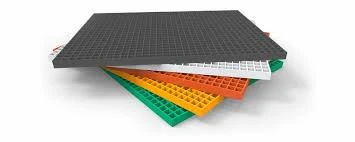
-
 Afrikaans
Afrikaans -
 Albanian
Albanian -
 Amharic
Amharic -
 Arabic
Arabic -
 Armenian
Armenian -
 Azerbaijani
Azerbaijani -
 Basque
Basque -
 Belarusian
Belarusian -
 Bengali
Bengali -
 Bosnian
Bosnian -
 Bulgarian
Bulgarian -
 Catalan
Catalan -
 Cebuano
Cebuano -
 China
China -
 China (Taiwan)
China (Taiwan) -
 Corsican
Corsican -
 Croatian
Croatian -
 Czech
Czech -
 Danish
Danish -
 Dutch
Dutch -
 English
English -
 Esperanto
Esperanto -
 Estonian
Estonian -
 Finnish
Finnish -
 French
French -
 Frisian
Frisian -
 Galician
Galician -
 Georgian
Georgian -
 German
German -
 Greek
Greek -
 Gujarati
Gujarati -
 Haitian Creole
Haitian Creole -
 hausa
hausa -
 hawaiian
hawaiian -
 Hebrew
Hebrew -
 Hindi
Hindi -
 Miao
Miao -
 Hungarian
Hungarian -
 Icelandic
Icelandic -
 igbo
igbo -
 Indonesian
Indonesian -
 irish
irish -
 Italian
Italian -
 Japanese
Japanese -
 Javanese
Javanese -
 Kannada
Kannada -
 kazakh
kazakh -
 Khmer
Khmer -
 Rwandese
Rwandese -
 Korean
Korean -
 Kurdish
Kurdish -
 Kyrgyz
Kyrgyz -
 Lao
Lao -
 Latin
Latin -
 Latvian
Latvian -
 Lithuanian
Lithuanian -
 Luxembourgish
Luxembourgish -
 Macedonian
Macedonian -
 Malgashi
Malgashi -
 Malay
Malay -
 Malayalam
Malayalam -
 Maltese
Maltese -
 Maori
Maori -
 Marathi
Marathi -
 Mongolian
Mongolian -
 Myanmar
Myanmar -
 Nepali
Nepali -
 Norwegian
Norwegian -
 Norwegian
Norwegian -
 Occitan
Occitan -
 Pashto
Pashto -
 Persian
Persian -
 Polish
Polish -
 Portuguese
Portuguese -
 Punjabi
Punjabi -
 Romanian
Romanian -
 Russian
Russian -
 Samoan
Samoan -
 Scottish Gaelic
Scottish Gaelic -
 Serbian
Serbian -
 Sesotho
Sesotho -
 Shona
Shona -
 Sindhi
Sindhi -
 Sinhala
Sinhala -
 Slovak
Slovak -
 Slovenian
Slovenian -
 Somali
Somali -
 Spanish
Spanish -
 Sundanese
Sundanese -
 Swahili
Swahili -
 Swedish
Swedish -
 Tagalog
Tagalog -
 Tajik
Tajik -
 Tamil
Tamil -
 Tatar
Tatar -
 Telugu
Telugu -
 Thai
Thai -
 Turkish
Turkish -
 Turkmen
Turkmen -
 Ukrainian
Ukrainian -
 Urdu
Urdu -
 Uighur
Uighur -
 Uzbek
Uzbek -
 Vietnamese
Vietnamese -
 Welsh
Welsh -
 Bantu
Bantu -
 Yiddish
Yiddish -
 Yoruba
Yoruba -
 Zulu
Zulu
frp manhole cover
The Advancements and Benefits of FRP Manhole Covers
In recent years, the material landscape for manhole covers has seen a significant transformation with the introduction of Fiber Reinforced Polymer (FRP) manhole covers. Known for their strength and durability, FRP manhole covers are increasingly gaining popularity among municipalities and construction companies. This article discusses the advantages, applications, and the future of FRP manhole covers in urban infrastructure.
What is FRP?
Fiber Reinforced Polymer (FRP) is a composite material made from a polymer matrix reinforced with fibers, such as glass, carbon, or aramid. This unique combination gives FRP its lightweight yet high-strength characteristics, making it an ideal choice for various applications, including manhole covers. Unlike traditional materials like cast iron or concrete, FRP offers enhanced performance in several key areas.
Durability and Longevity
One of the standout features of FRP manhole covers is their durability. They resist corrosion, rust, and deterioration caused by various environmental factors, including water, chemicals, and extreme weather conditions. While metal covers may corrode over time and concrete can crack, FRP manhole covers maintain their structural integrity for decades with minimal maintenance. This longevity translates into cost savings over time, as municipalities will have fewer replacements and repairs to manage.
Lightweight Yet Strong
FRP manhole covers are significantly lighter than their metal counterparts. This is a crucial advantage during installation, as the reduced weight lessens the need for heavy machinery and the associated labor costs. Workers can handle these covers more easily, making the installation and maintenance processes more efficient. Despite their lightness, FRP covers maintain impressive load-bearing capacities, essential for safe urban environments.
Safety and Security Features
frp manhole cover

Safety is paramount in urban infrastructure, and FRP manhole covers excel in this regard. Many designs include non-slip surfaces, which help prevent accidents in wet or icy conditions. Additionally, these covers can be manufactured to be lockable, providing an extra layer of security against theft and unauthorized access. This is particularly important in areas where sensitive utilities are located.
Environmental Considerations
With growing concerns about sustainability, the environmental impact of construction materials has come under scrutiny. FRP manhole covers can be manufactured using recycled materials, and they are often fully recyclable at the end of their life cycle. By choosing FRP, municipalities can reduce their carbon footprint and contribute to a circular economy.
Applications in Urban Infrastructure
FRP manhole covers are versatile and can be used in various settings, from residential neighborhoods to industrial zones. They are particularly advantageous in areas prone to flooding, as their lightweight nature allows for easy adjustments to elevation. Additionally, their resistance to chemical exposure makes them suitable for locations with sewage systems or industrial waste.
The Future of FRP Manhole Covers
The future looks bright for FRP manhole covers in urban infrastructure. As cities continue to develop and face challenges such as aging infrastructure, the demand for innovative solutions like FRP is on the rise. Ongoing research and development are likely to yield even more advanced formulations and designs, further enhancing their performance and expanding their applications.
In conclusion, FRP manhole covers represent a significant advancement in urban infrastructure materials. Their durability, lightweight nature, safety features, and environmental benefits mark them as a preferred choice in modern construction. As municipalities aim to improve their infrastructure systems, FRP manhole covers are poised to play a crucial role in shaping the cities of the future.









